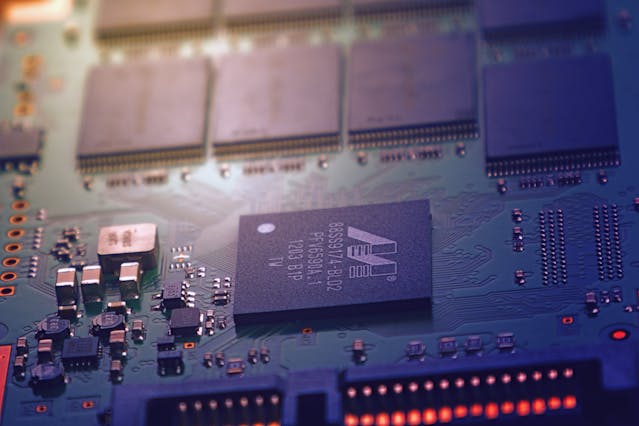What is Embedded Software? Learn About its Structure, Examples, Future and More
Do you dream of succeeding in the IT industry while accomplishing your goals and targets? Then, learning about embedded software should play a major role in that path. Embedded software was first developed over 50 years ago, and it became an integral part of the software industry over the years. At present, embedded software is being used in the development of the Internet of Things (IoT) or devices like ventilators or medical equipment.
The healthcare industry has continued to play a major role in the rise seen across embedded software usage. Currently, tens of thousands of products seem to have embedded software present in them. In this article, we are going to look at the details of what is embedded software while understanding its categories, types, examples, and many more.
Table of Contents
What is Embedded Software?
Embedded software is specialized applications that function over custom-built special-purpose hardware. The primary purpose of embedded software is to define the same tasks repeatedly, thereby reducing manual tasking.
Some of the common embedded system software that you might have come across in your daily surroundings could be electric switchgear to building systems. Even factor machines are known to have prominently embedded software.
In most cases, embedded software is simply made while taking up memory space of a few kilobytes. Or it could also range toward complex systems with thousands of coding lines. On further breaking down, the global embedded system market is projected to increase by 6.5% within the year 2031.
What Does Embedded Programming Mean?
The main goal behind the efforts induced into embedded programming is to design consumer or business-centric devices effortlessly. It is the innovative concept of embedded programming that is driving the growth of the IT industry in today’s economic slowdown. Embedded programming can also be famously referred to as embedded software development.
Embedded programming is completely different compared to traditional desktop programming. Desktop programming can be installed and run across a variety of computers or devices through reconfiguration. However, there are specific software programs that are built for embedded programming. Therefore, it can only run on devices where it is specifically intended to.
Steps To Build an Efficient Embedded System
Once you have understood what is embedded system is? It might be time for you to move forward and understand How to build an efficient embedded system. For this reason, we have tried to explain the steps that go into building an efficient embedded system. Eight steps must be followed for building a well-researched embedded system.
1. Understanding Product Concept and its Immediate Purpose
When it comes to building an embedded system, the manufacturer must try and explain its demands based on customer requirements. The embedded system developers need to create a road plan adhering to the benefits it would provide. Moreover, an average cost estimation needs to be provided before the start of the development process. This would help in making an effective decision regarding the importance of embedded systems.
2. Creating a Chart Stating Overall Requirements
It is the responsibility of embedded software engineers to determine the requirements of the product to function smoothly. This embedded software developer would also be tasked with asking questions about the performance of embedded systems. Additionally, the hardware where such embedded software is needed to be installed should also be considered heavily.
3. Writing down Technical Specifications
The technical specifications adhering to the development of embedded system software must be researched thoroughly. Within those technical functionalities, there would be things like functions, environmental impact, and manufacturing requirements. In writing those specifications, the work involved in the building of embedded systems could be made easier.
4. Find out whether the Embedded System Requires a User Display
Sometimes, embedded systems are required to have a proper display present. This helps the users understand the operation being conducted by those embedded systems. However, it is the responsibility of embedded system developers to find out whether the device needs to have a display or not. A user interface could be required for such an embedded system to perform adequately.
5. Designing a Prototype
Being an embedded system developer, once you have gathered all the necessary information. It might be time for you to design a prototype to understand whether the device is working seamlessly and adhering to certain specifications. It could also help you in identifying mistakes or rectify the problems that might be persisting within the allocated specifications.
6. Designing the Architecture of the Needed Embedded System
When you have completed testing the prototype of the embedded system. It would help if you moved on to the next step of designing its overall architecture. For instance, in what way will an embedded system be allocated power, and how can it be linked with the internet and similar categories of questions?
7. Taking Note of Operating System, Applications, and Development Procedure
It is up to the embedded system developers to decide whether the product developed requires a real-time operating system. When it comes to the operating system, it would be responsible for determining the processing time required to send inputs within a period. Based upon those adjunctions, the embedded system developers would decide which operating system will suit the best.
8. Creating the Final Product
After completing all the steps talked about earlier, it would be time for embedded system developers to show the real product. The final prototype would depend on how well the architecture is working.
Examples of Embedded Software
One of the simplest examples that you can come across while researching embedded systems would be the purpose of calculators. Before smartphones started to have built-in calculators, traditional calculators had embedded systems present in them. Yet another common example of embedded systems is a TV remote or digital camera.
Nonetheless, there are some complex use cases of embedded software that must be understood to get a thorough understanding. A few of those common examples have been listed down below:
1. Connected Cars
The software designed for connected cars is known to have embedded systems in place. This is because certain principles and quality standards must be checked before launching those products in public. Tens of thousands of coding is initiated for designing the embedded systems attached to connected cars.
2. Smart Parking Software
Smart parking software has revolutionized parking applications. It is known to work efficiently based on an electronic embedded system.
3. IoT Devices
IoT devices have continued to show their importance in utilizing embedded systems. The IoT ecosystems have multiple devices connected to sensing environmental or industrial parameters efficiently. It helps in capturing diverse data in different ways.
4. Automobile Software
When it comes to using embedded systems, people might have thought have self-driving cars could be a common example. However, modern automobiles have mastered the use of embedded systems. This embedded software is responsible for managing automotive components, like climate control, power and energy consumption, engine control, and suspensions.
5. Common Appliances
Yet another common example of an embedded system corresponds to appliances usually used daily. Some of them are dryers, washing machines, refrigerators, microwaves, coffeemakers, etc. The embedded system is responsible for keeping the performance of the software in check while reducing overall power and energy consumption.
Find out the Future of Embedded Software
As things stand, embedded software is continuing to grow at a rapid pace while reaching new targets daily. On the back of computing power and storage canisters, the efficiency of embedded software is growing fruitfully. Looking at some of the points related to its future could help you get a thorough understanding.
Artificial Intelligence
Whenever it comes to talking about the future of embedded software, artificial intelligence is the first thing that comes to mind. One of the common examples showcasing the influence of embedded systems in artificial intelligence is the design of security video systems.
Compared to the existing security camera that is known to capture the person coming in its radius. This security video system can record a person while deciphering whether those individuals pose a threat to society.
This would help in receiving early warnings, thereby avoiding any potentially dangerous situations.
Rise of Python Programming Language
One of the huge upsides that has come through the rise of embedded systems is the growth of Python usage. Python has been touted as a potential improvement to take embedded systems to the next level. Within the next decade, Python could play an integral role in the overall development of revolutionized embedded systems.
Why you should know about Embedded Systems?
Here are some of the common features that could convince you regarding the task of knowing and studying embedded systems thoroughly.
Perform Similar Tasks
Due to the huge workload associated with software development, developers are known to encounter a variety of problems. However, embedded systems can help in solving one of those issues through their task-specific abilities. Embedded systems are known to perform any set of given tasks repeatedly due to their unique programming.
Completing Tasks Efficiently
One of the abilities for which embedded systems are quite renowned is completing tasks within a specified period. Therefore, you can achieve your targets in a limited time frame without having to face any usual delays.
Conclusion
When talking about the biggest quality in embedded software, people would be surprised to know that it can be found everywhere around us. This system is hugely common and innovative compared to other devices. Moreover, based on its rapid growth, embedded software could soon take over the market of application software. Therefore, if a company is ambitious enough to achieve its targets, choosing to rely upon the improvement of embedded systems could be the solution.
Frequently Asked Questions (FAQ’s)
Why do we need Embedded Systems?
Embedded systems are needed to complete tasks efficiently within a given period while encountering minimal issues.
What is the Common Function of Embedded Systems?
Embedded systems are specially designed to perform a function that isn’t necessarily possible through other devices.
Which Software is used for Embedded Systems?
C, C++, and ADA are some of the common software languages that are used to design embedded systems.
Who invented Embedded Systems?
Charles Stark Draper invented it.









